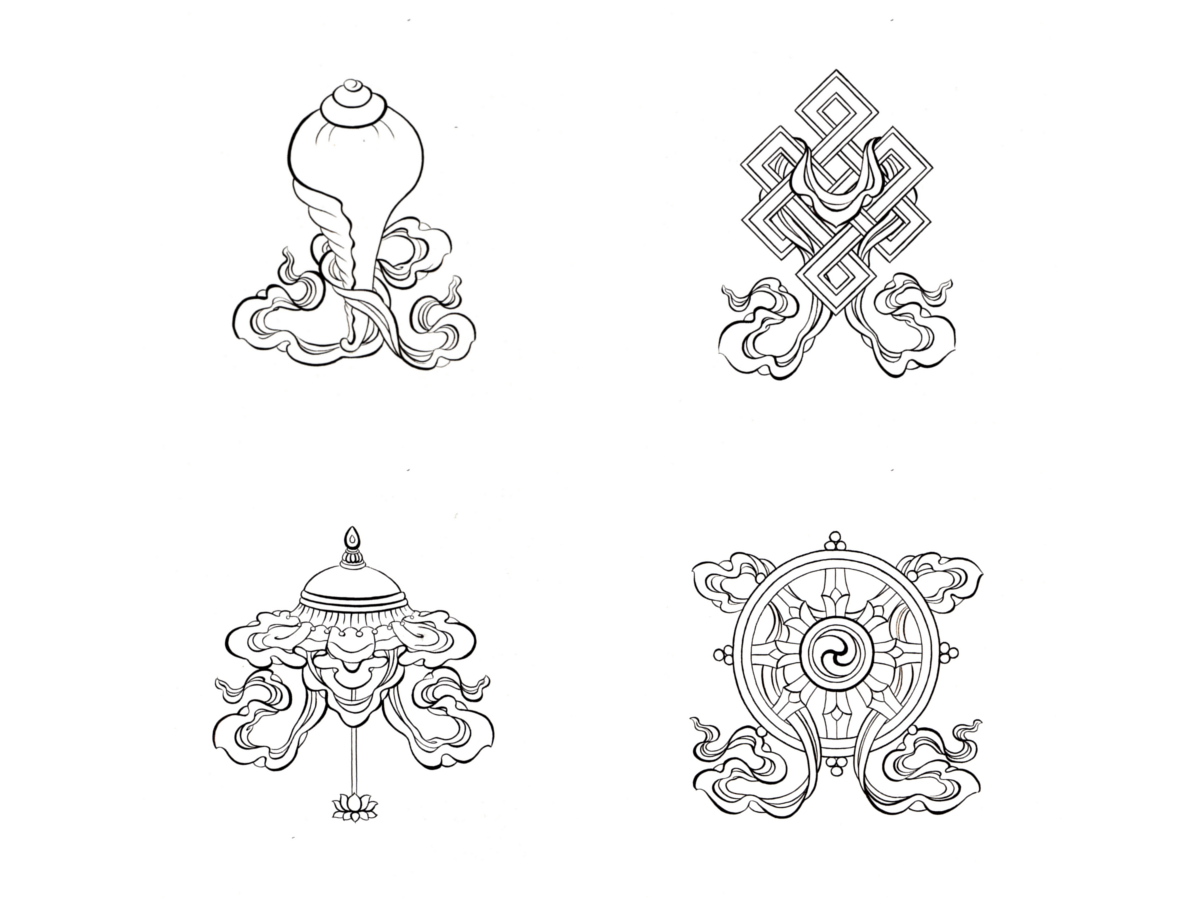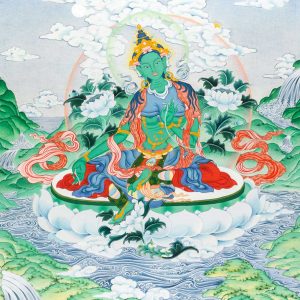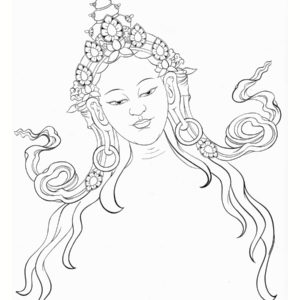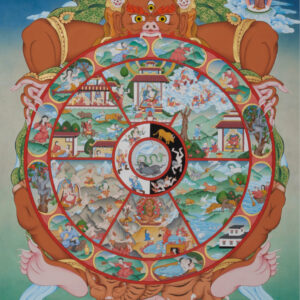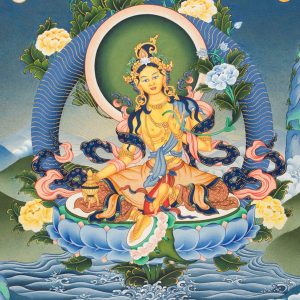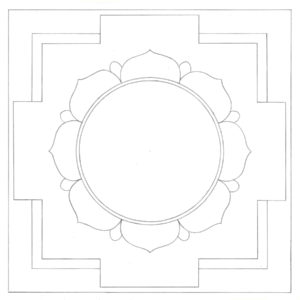The eight symbols in detail – following
Four of the eight symbols of Good Auspicious.
THE SHELL
The shell in Sanskrit – daksinavartasankha – and in Tibetan – dung gyas-‘khyl – is generally represented white in color. It is a natural object and has been used in antiquity as a ritual instrument and for example in pre-buddist times is a symbol of female deities. It is often used as a musical instrument.
The sound of the shell expands in all directions, so it represents the teaching of Dharma which spreads just like its powerful sound.
THE ENDLESS KNOT
The endless knot in Sanckrit – srivatsa – and in Tibetan – dpal be’u – is a closed knot composed of geometric lines that intersect each other at right angles. It is a symbol widely used in Tibetan iconography and because of its importance and graphic simplicity, this symbol is also used alone.
It is a symbol directly explanatory of the way in which all phenomena are interdependent and in turn depend on causes and conditions.
Having neither beginning nor end, it also symbolizes the infinite knowledge and wisdom of the Buddha.
THE PARASOL
The Parasole in Sanskrit – chattra – and in Tibetan – gdugs – dating back to Indian art, is found in different variations in Tibetan iconography: it can be more or less elaborate, yellow, white or multicolored and is represented open. It is used in ceremonial processions to protect what is most sacred from the weather.
It symbolizes the total activity of the Dharma in protecting all sentient beings from adverse forces, obstacles, ignorance and rebirth in the lower realms to achieve complete liberation from suffering.
It also represents the compassion and capacity for protection that is achieved by taking refuge in the three jewels.
THE WHEEL OF DHARMA
The Dharma Wheel consists of a central hub, 8 spokes and an outer rim. In Sanskrit – dharmachakra – and in Tibetan – khor-lo – it symbolizes Buddhist teaching as a whole.
The hub represents training in the moral discipline that makes the mind stable, the rays represent the understanding of the emptiness of all phenomena that allows to eliminate ignorance and the outer circle identifies the concentration that allows to keep the practice firm.
The wheel therefore represents the law of cause and effect that is the basis of the cycle of rebirth and at the same time the doctrine that leads to liberation from suffering.
It represents in fact the Buddha Shakyamuni himself, the noble path and the Dharma.
It also reminds us that the Dharma embraces all things, it has neither beginning nor end, it is in motion and motionless.



